Hermès (RMS Paris)

On July 20, 2018 Hermès International released their 2018 first half results. We analyze here how the Hunger Score performed in anticipating this trend.
Hermès is particularly interesting to us because it represents one of the highest positioned luxury brands in the monitored panel, alongside Chanel, Dior and Louis Vuitton.
As we observed, these brands have embraced cautiously the digital revolution, by being very careful in maintaining their brand equity and keeping the distance from the dangers of the ubiquitous digital ecommerce websites.
This represents both a strategic advantage for them and a difficulty for us in detecting trends through our digital observatory.
We were thus positively surprised when stated that the Hunger Score predicted correctly direction (positive) and size (comparable to Q1) of organic revenue growth for this brand. As our observations of the industry say, in fact, even the most exclusive brands, difficult to correctly spot on the digital marketplaces, cannot avoid being observed.
This was not the case in 2016, when luxury mega brands avoided so much exposure, that was very difficult for us to draw conclusions out of our radar. Fast forward 2018 more and more signals emerge that are coherent with consumer demand (or as we say “hunger”) for the brand.
This would explain why the Hunger Score is less correlated to Hermès organic growth in 2017, since it benchmarks metrics against 2016, when signals were not as strong as they are becoming lately.
Let’s get deeper in the underlying signals
Strong indicators: organic search scored, and website traffic visits increased in the upper single-digit range for the second quarter 2018, but we registered a stronger Chinese component in the search index.
Looking at their press release, we found confirmation to this observation. While globally Hermès grew +12% at constant currency rates, it scored a +15% in Asia (excl. Japan) “with positive momentum in continental China and the whole region”.
Physical stores network growth is very significant indicator for Hermès, driven primarily by direct to consumer distribution model, with limited wholesale (excluding licensing on accessories and cosmetics).
Wholesales multibrand selection, promotion and price discipline are weaker indicators, for a brand that limits so strongly their presence on online multibrand websites. The exact opposite of omni-present brands like Gucci or Prada.
